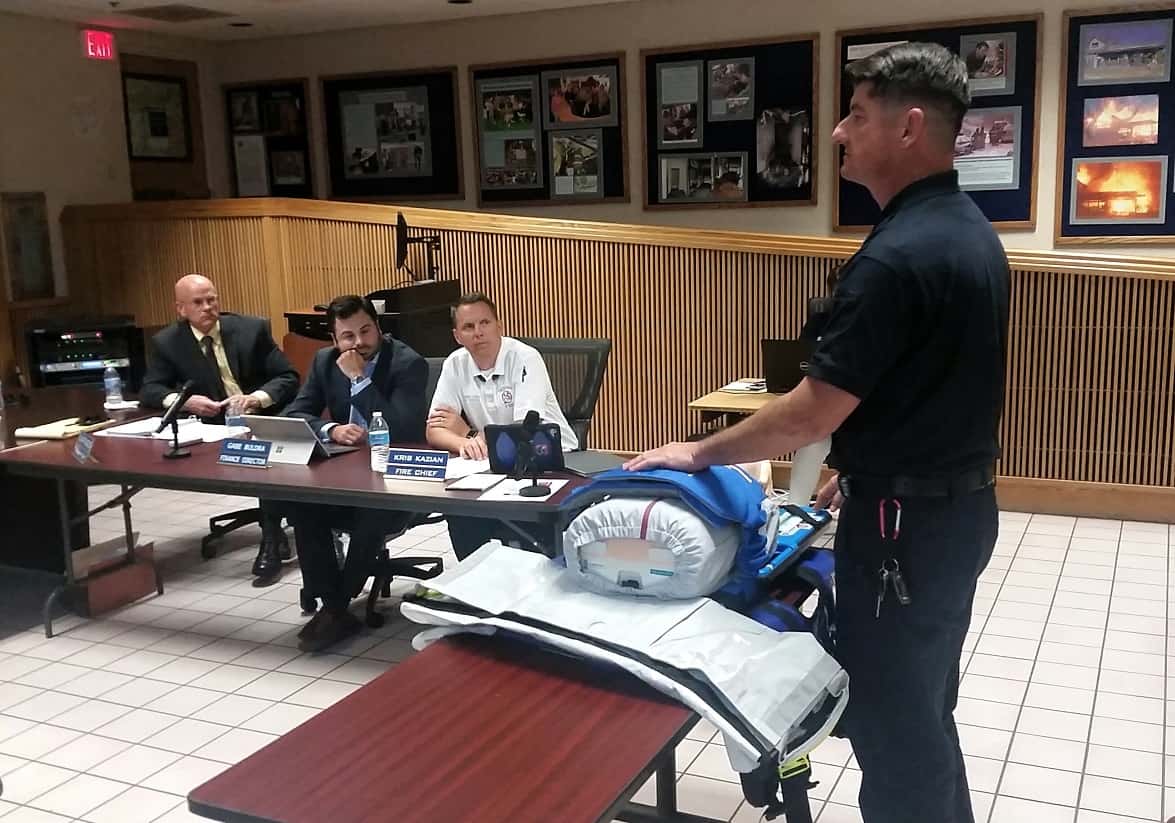
The Sedona Fire District is always searching for ways to improve the care it provides to patients when arriving on a call, whether that’s the latest training techniques or through updated vehicles and equipment.
The latest lifesaving piece of equipment to be added to the district is an AutoPulse Resuscitation System. According to its manufacturer, Zoll, the device “provides high-quality automated CPR to victims of sudden cardiac arrest. Easy to use and battery-operated, the AutoPulse squeezes the patient’s entire chest to improve blood flow to the heart and brain.”
Zoll goes on to state, “When the AutoPulse’s stabilizing board is placed on a soft stretcher, rescuers can continue providing high-quality CPR down steep stairwells, around sharp corners or even in a cramped elevator. Compared with manual CPR, the AutoPulse has been shown to reduce interruptions in compressions during transport by more than 85 percent. The AutoPulse is made for resuscitation on the move.”
Division Chief Ed Mezulis gave a brief presentation of the device during the Tuesday, Sept. 18, SFD Governing Board meeting. SFD has one AutoPulse system — which it received on Sept. 1 — kept at Station 4 in Uptown.
“Based on our data over the last few years, the battalion rig gets to 99 percent of our cardiac arrests within 20 minutes,” Mezulis said.
The system comes in a carrying case, to which the district has added backpack straps, since first responders are often required to hike to where the patient is located.
“Our guys can take this into the backcountry and have good compressions during a cardiac arrest,” he said.
The battery on the unit lasts for 30 minutes, and a backup battery doubles that time in order to get a patient to an ambulance and then to the hospital.
When on scene, the battalion chief will prep the unit adjacent to the patient as additional personnel begin, or continue, manual CPR. The AutoPulse system unfolds like a small inflatable mattress. At the appropriate time, crews will transition the patient from CPR to the device.
The band goes over the chest, it sizes the patient and then automatic compressions begin on its own. It will stop and beep to tell the firefighter that ventilation to the patient is needed. The only caveat is the patient’s torso has to be 300 pounds or less, not including leg or arm weight.
When ready for transport, the carrying case folds out to a makeshift stretcher with handles. Afterward, the data from the incident can be downloaded into the district’s computers for evaluation.
“It’s a good device, which has been proven by the data,” Mezulis said.
The cost for the unit is $16,400, and even though the district has just one, that number may increase.
“Whether we end up with just one on the battalion chief rig or if we find it to be valuable, we may purchase more in the future and get them on each ambulance,” Fire Chief Kris Kazian said.
Following the meeting, Mezulis was asked how advantageous it will be for the district to have this device.
“That is a tough question to answer,” he said. “Many of the benefits are yet to be measured. Nationally, it is proven that effective compressions diminish in the back of an ambulance for a number of reasons. Having this device will improve that piece of the puzzle.”





















